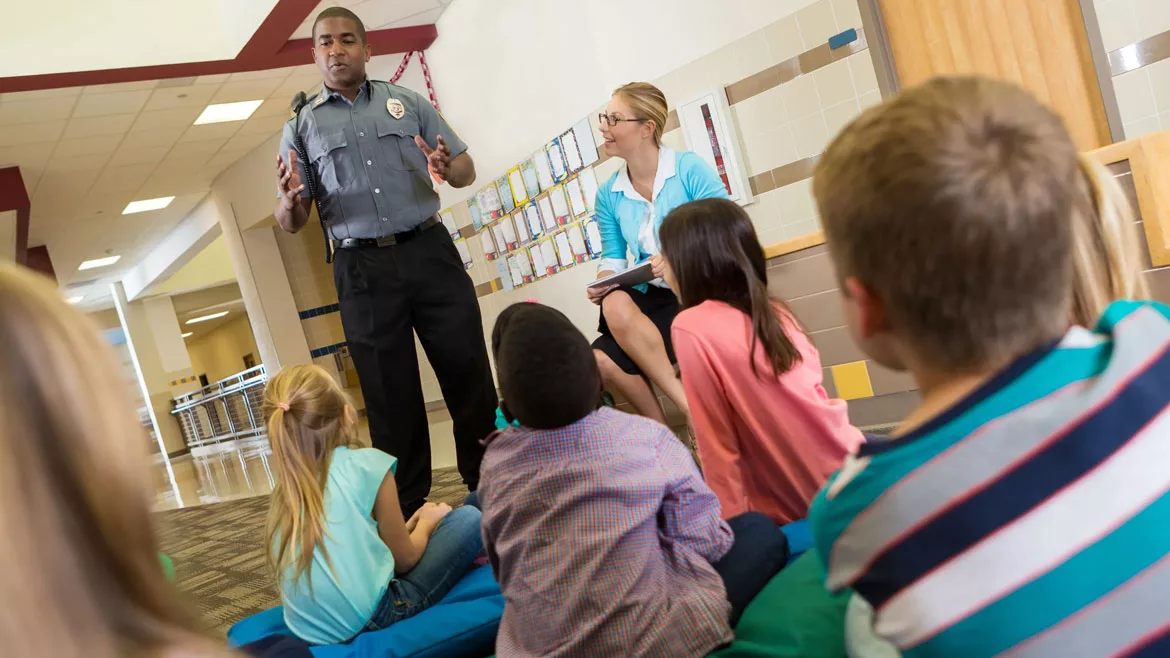Education & Training
Key elements of a comprehensive K-12 security plan
A security plan can help mitigate risk, prevent threats, improve emergency response and ultimately help keep students safe.

SDI Productions / E+ via Getty Images
Mr. Stanley felt like rolling his eyes. The Superintendent had just told him that, in addition to his existing responsibilities, he would now have oversight of the security program. Would his new title be Director of Facilities and Operations... and Safety? He wondered if he could do it. He wondered where to begin.
The safety and wellbeing of students and staff, in every situation, every day is a top priority for school administrators and educators. To accomplish this, it’s crucial to have a comprehensive security plan in place. A security plan helps to mitigate risks, prevent threats, respond to emergencies and ultimately help keep people safe.
When it comes to safeguarding K-12 schools, the Partner Alliance for Safer Schools (PASS) recommends several components to consider for a successful safety and security plan. Four key elements derived from PASS recommendations include: practices, people, programs and physical security.
Practices
Practices refer to the policies and procedures that schools put in place to maintain a safe environment. From visitor management practices to supervision of exterior activities, make sure to document and disseminate. Provide routine instruction. One critical practice is the implementation of reporting systems for any suspicious or threatening activity. Schools should provide an anonymous system for reporting any security concerns. Approximately 30 states provide this kind of resource for students, parents, teachers and community members. This system should allow individuals to report concerns without fear of retaliation.
Emergency preparedness practices are also essential. Schools must prepare for natural disasters, fires, active shooters, medical incidents and other emergencies. This should include regular training and drills for students and staff, as well as clear emergency response plans.
People
People are a vital element of any security plan. Schools should have trained personnel on staff who can contribute to the maintenance of a secure environment and respond to emergencies. Designated administrators and staff should receive training in emergency response, behavioral threat assessment and crisis management.
Students also play a critical role in maintaining a safe environment. Since they are more knowledgeable regarding technology and peer issues, their voices must be heard. Schools should find appropriate ways to involve students in social media initiatives and community enhancement projects. At the same time, it is best practice for schools to provide resources for students who feel threatened or in danger.
Programs
Programs refer to the initiatives that schools put in place to enhance security measures. One critical program is the establishment of a Safety Planning Team. This team should be comprised of school stakeholders, such as administrators, teachers, staff members, school resource officers and students. The team’s main responsibility is to develop and maintain the school's security plan, including conducting regular security assessments and updating and teaching emergency response procedures.
Schools might also consider providing incentives to those who demonstrate a commitment to safety. For example, a teacher who reports a legitimate safety issue might be rewarded with a coffee shop gift card. This kind of incentive program encourages individuals to make personal investments that, ultimately, impact culture.
Physical security
Physical security refers to the measures taken to secure the school’s property, parking areas, building(s) and classrooms. These measures may include the installation or expansion of video surveillance systems, communication systems, electronic access control systems and exterior lighting.
It is imperative that K-12 schools use a layered approach to school security measures starting at the perimeter, all the way to the classroom door. A security assessment can help administrators understand where weaknesses or vulnerabilities may lie in their school’s physical security.
Other elements
In addition to the four main elements of a comprehensive K-12 security plan, schools should also consider mental health support and the implementation of bullying prevention programs. These supports and programs aim to create safe and inclusive environments that promote positive behavior and discourage bullying.
Threat and security assessments are essential for identifying potential threats and vulnerabilities in a school’s security plan. These assessments should be conducted regularly and involve a comprehensive review of the school’s security procedures and physical security measures.
Additional resources
A comprehensive K-12 security plan is essential for maintaining a safe and secure learning environment and keeping students, teachers and staff safe in every situation, every day. A few of the key elements of a security plan include practices, people, programs and physical security. However, maintaining a safe learning environment doesn’t need to stop there. Schools may also consider implementing bullying prevention programs and conducting regular threat and security assessments.
Resources, including passk12.org, schoolsafety.gov and rems.ed.gov, provide valuable information and guidelines for creating a comprehensive K-12 security plan. By reviewing these guidelines and implementing the best practices for any unique situation, schools can enhance the safety and well-being of their students and staff.
Mr. Stanley took a deep breath and thought about his added responsibility. He realized that his shoulders were not broad enough to carry the security program by himself. If he undertook a collaborative approach that leveraged an effective Safety Planning Team and the right web-based tools and resources, he could build and develop an effective security plan.
Looking for a reprint of this article?
From high-res PDFs to custom plaques, order your copy today!





.webp?height=200&t=1717794274&width=200)


